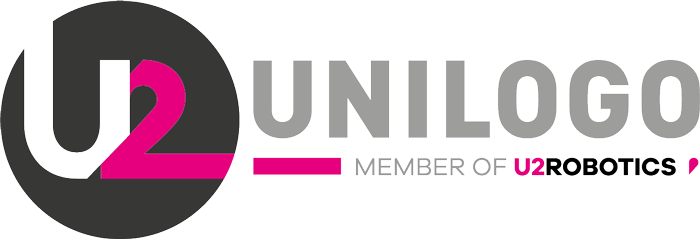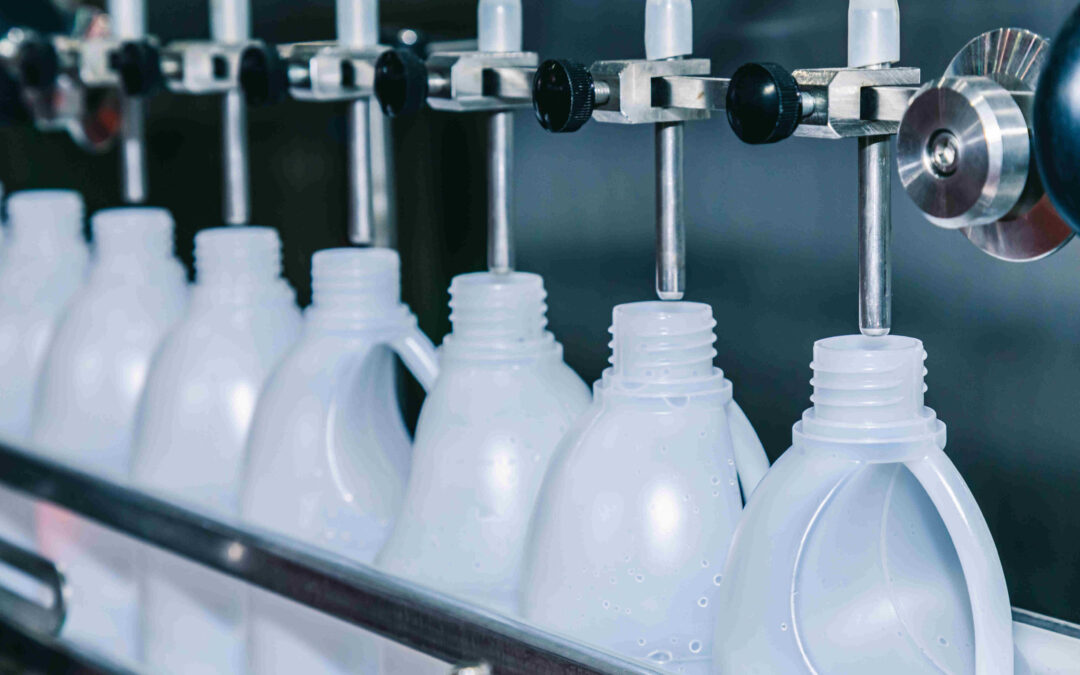Today, almost every production line that fills bottles uses automated filling machines. They reduce production costs and increase productivity.
Table of contents:
Filling bottles with liquid – characteristics of liquid filling machines
Automated machines for filling bottles with liquid, known as filling machines, are now an integral part of any production line where products are filled into individual packages. They are high-speed machines operating at high capacity with a high level of accuracy, ensuring that the correct amount of liquid is put into the bottle or other packaging every time.
Filling machines can be sold as either fully automatic or semi-automatic machines. Either way, these machines play a key role in the production process of any company involved in the manufacture of liquid products. Automated bottle-filling systems allow the filling process to be streamlined, increasing efficiency and reducing production costs.
Filling machines can handle various types of packaging made from many different materials. These can range from glass bottles to plastic and recycled containers. This versatility means that filling machines can be used in a wide range of industries and sectors. They can be found in the food, cosmetics, pharmaceutical, chemical and many other industries involved in manufacturing liquid products.
Modern filling machines allow instant changeovers, i.e. changing the production format from one product to another. Changeovers can involve, among other things, changing the format nests into which the filled packages are placed. The Futureproof 120 filling line offered by Unilogo is designed in this way. Thus, a manufacturer can use a single line or machine to produce multiple product types without purchasing additional production equipment.
The market offers filling machines for dispensing many different types of liquid products. These can be both low- and high-density substances. The range of viscosities of the liquids to be dispensed is also very wide. Some machines, such as the Hemiline 40 range, can also handle substances that tend to foam.
Types of filling machines
We have already mentioned the basic division of filling machines. These are generally semi-automatic or fully autonomous machines that enable automated bottle filling. The main difference between the two types of machines is how empty bottles or containers are fed into the machine.
In the case of semi-automatic filling machines, the containers are placed on the machine table by the operator. The operator then initiates the filling cycle by pressing the start button. The nozzles on the machine drop down and begin filling the empty containers. When the filling is complete, the nozzles rise and the operator removes the filled containers from the machine and starts the cycle again.
In the case of automatic machines, the filling process takes place without operator intervention. Empty containers are automatically fed into the machine by a conveyor or special feeder. Automatic filling machines are often integrated with a capping and labelling machine, so the containers supplied by such a bottling system are already ready for bulk packaging.
Filling bottles – types of dosing systems
Both automatic and semi-automatic filling machines can be equipped with different types of dosing systems. The type of dosing system selected is determined primarily by the type of liquid to be filled, but also by the desired production capacity and dosing accuracy.
A piston system is often used for the filling cycle. This consists of a cylinder and a piston that moves up and down within the cylinder. Depending on the position of the piston, the liquid is either drawn from the main tank or transferred to a nozzle directly above the individual package into which the liquid is to be transferred. These machines are ideal for dense cosmetic products such as shampoos, soaps, and creams.
When greater dosing accuracy is required, dosing systems equipped with flow meters are used. These measure the flow of the liquid by controlling its intrinsic properties, such as the volume or mass of the liquid being conveyed. They are characterised by a high dosing accuracy of 0.5%. Dosing systems of this type mainly use mass or electromagnetic flow meters. They work best in companies producing sparkling water, alcohol and other types of beverages.
Another type of bottle dispensing machine found in filling machines is the pressure and flow system. This is most commonly used when dispensing low- to medium-density liquids. Unfortunately, it does not work with higher-viscosity products, so this type of filling machine is not suitable for dispensing creams, pastes, etc. For this reason, they are mainly used in the chemical, cosmetic, or food industries.
Automated bottle filling system. Summary
In conclusion, a filling machine is a necessary piece of equipment in any modern bottling system. Filling machines are highly accurate, repeatable, and fast in their operation, significantly increasing production efficiency and therefore maximising the manufacturer’s profits.
There are both fully automatic and semi-automatic filling machines on the market. In the latter case, the operator feeds the machine with empty packaging and containers, which must be removed from the machine by the operator at the end of the filling process. With automated machines, there is no need for the operator to be involved in the entire process. Such machines operate autonomously, with human involvement limited to occasional checks to ensure that the production process is running correctly.
If you are thinking about buying a filling machine for your business, we invite you to get in touch with Unilogo using the contact form on our website. We guarantee that our team of skilled engineers will make every effort to develop and present the ideal solution for your company.


